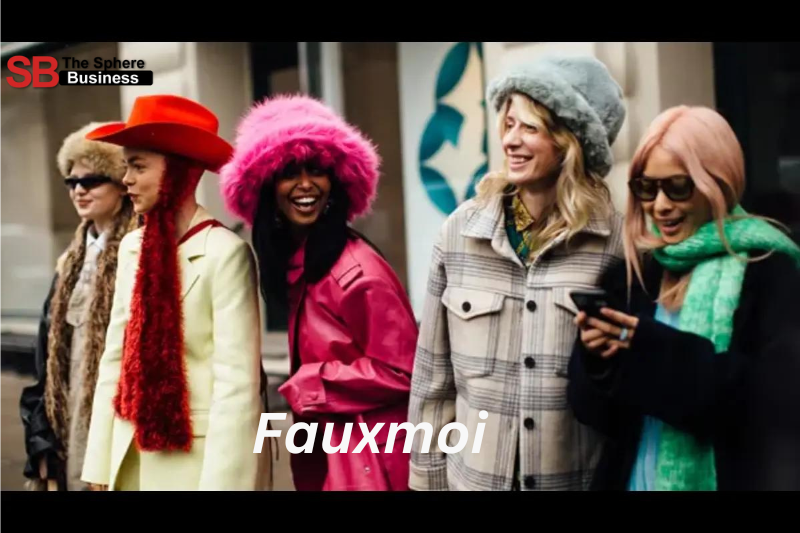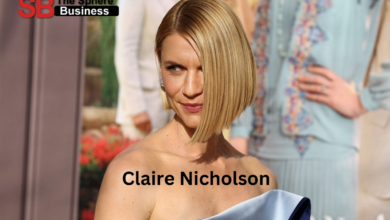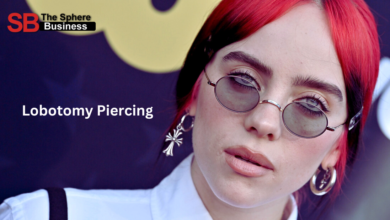Fauxmoi: Exploring the Trend of Faux in Fashion and Lifestyle

In today’s ever-evolving world of fashion and lifestyle, the term “faux” has become increasingly prevalent. Derived from the French word for “false” or “fake,” fauxmoi refers to a style or material that mimics the real thing without the hefty price tag or environmental impact. Whether it’s faux leather, faux fur, or even faux marble, this trend is not just about imitation but about making sustainable and stylish choices that align with modern ethical concerns.
In this article, we will delve into the concept of fauxmoi, exploring its significance in fashion, home decor, and how it has evolved to become a staple in contemporary design. We’ll also examine the reasons behind its popularity and how it’s shaping consumer choices in today’s marketplace.
The Rise of Fauxmoi in Fashion
Fauxmoi has made a significant mark in the fashion industry over the past decade. One of the major reasons for its rise is the shift towards ethical and sustainable fashion choices. In the past, real fur, leather, and other animal-derived products were highly coveted. However, increasing awareness about the environmental impact and animal cruelty associated with these materials has led to a surge in demand for faux alternatives.
Faux Leather and Its Popularity
Faux leather, also known as vegan leather, has quickly become a favorite among fashion enthusiasts. Not only does it provide the same sleek, stylish appearance as real leather, but it also avoids the ethical dilemmas of traditional leather production. Brands like Stella McCartney and Matt & Nat have championed this movement, proving that luxury fashion can coexist with eco-conscious values.
Faux Fur: Warmth Without Harm
Another area where fauxmoi has thrived is in the realm of faux fur. Real fur has long been a symbol of luxury, but as people become more aware of the negative environmental and ethical ramifications, faux fur has stepped in as a cruelty-free alternative. It’s now easy to find faux fur coats and accessories that look and feel just as glamorous as the real thing. Leading fashion houses like Gucci and Versace have also embraced faux fur, signaling a major shift in the industry.
Fauxmoi in Home Décor: Style Meets Sustainability
The trend of fauxmoi isn’t limited to fashion alone. It has made significant inroads into the world of home décor as well. From faux marble countertops to faux plants, the use of imitation materials allows consumers to achieve luxurious looks without the high cost or environmental impact of sourcing natural materials.
Faux Marble: A High-End Look for Less
In home décor, marble is often seen as the epitome of elegance and sophistication. However, real marble is not only expensive but also requires high levels of maintenance. Faux marble provides a more affordable and practical alternative that can be used in everything from countertops to coffee tables. Faux marble achieves the look of real stone while being much easier to care for and often more durable.
Faux Plants: The Perfect Greenery
For those who love the look of greenery but lack a green thumb, faux plants have become a popular solution. High-quality faux plants now look incredibly realistic, and they offer the perfect touch of nature without the need for watering or sunlight. They’re particularly popular in urban apartments and offices where natural light may be limited.
The Ethical and Environmental Impact of Fauxmoi
One of the most significant reasons behind the rise of fauxmoi is its positive ethical and environmental impact. Traditional materials such as leather, fur, and marble often come at a high cost to both the environment and animals. The fashion industry, in particular, is notorious for its carbon footprint, and the demand for animal-derived materials has long been a source of concern for environmentalists and animal rights activists.
Reducing Animal Cruelty
One of the most obvious benefits of the fauxmoi movement is its ability to reduce animal cruelty. The production of real leather, fur, and even some types of wool involves harm to animals, which has sparked outrage from consumers and advocacy groups. By choosing faux alternatives, consumers can enjoy the aesthetics of these materials without contributing to harmful practices.
Lowering Environmental Impact
In addition to being cruelty-free, fauxmoi materials tend to have a lower environmental impact. For example, the production of real leather is known to be water-intensive and contributes to deforestation and pollution from tanneries. Faux leather, on the other hand, is often made from synthetic or plant-based materials that are less resource-intensive. Similarly, faux marble avoids the environmental degradation that comes with quarrying natural stone.
Fauxmoi: A Trend That’s Here to Stay
While the rise of fauxmoi may have started as a trend, it’s clear that it’s here to stay. Consumers are increasingly aware of the ethical and environmental implications of their purchasing decisions, and they are choosing brands and products that align with their values. Faux materials offer the perfect solution, combining style, affordability, and conscious consumption.
Fauxmoi in Celebrity Culture
Celebrities have also played a significant role in promoting the fauxmoi movement. Many high-profile individuals, from Miley Cyrus to Kim Kardashian, have publicly endorsed faux materials and even launched their own lines of faux fashion. This celebrity influence has helped bring fauxmoi into the mainstream, making it more acceptable and desirable for the general public.
Innovation in Faux Materials
As technology continues to advance, so too does the quality of faux materials. Today’s faux leather and faux fur are nearly indistinguishable from the real thing, both in terms of aesthetics and performance. This innovation ensures that fauxmoi will continue to grow in popularity, especially as more companies invest in research and development to improve these materials.
Fauxmoi and Consumer Consciousness
As consumers become more conscious of the impact their choices have on the world, fauxmoi provides an ethical alternative that doesn’t compromise on style or quality. Whether it’s in fashion or home décor, faux products offer the look and feel of luxury without the moral or financial burden. From faux fur jackets to faux marble tables, consumers can now indulge in high-end aesthetics while staying true to their ethical principles.
The beauty of fauxmoi is that it caters to both style-conscious and eco-conscious consumers, making it a versatile trend that bridges the gap between fashion, sustainability, and affordability.

Conclusion: The Future of Fauxmoi
In conclusion, fauxmoi represents a growing movement toward ethical, affordable, and sustainable consumption. Whether in fashion, home décor, or lifestyle products, faux materials are proving that luxury and responsibility can coexist. As consumer demand for cruelty-free and environmentally friendly products continues to rise, we can expect to see even more innovations and developments in the world of fauxmoi.
The popularity of fauxmoi is not just a passing trend; it’s a reflection of the shifting values of today’s consumers who seek to make responsible choices without sacrificing style. As more people embrace faux alternatives, the future looks bright for this evolving industry.





